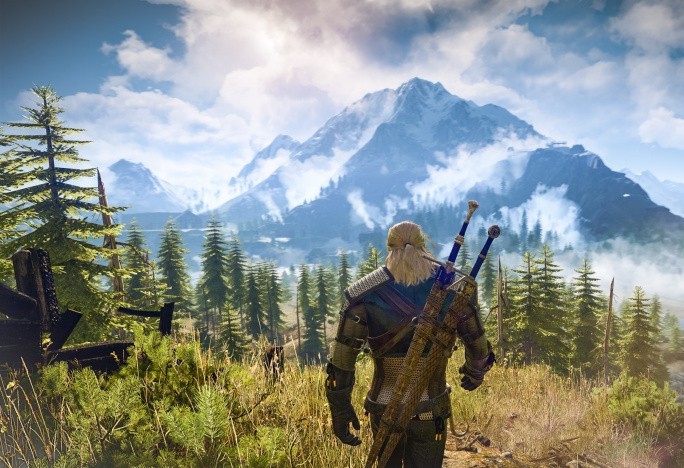Difference between revisions of "Bjarmaland"
Tao alexis (talk | contribs) |
Tao alexis (talk | contribs) m (Tao alexis moved page Kingdom of Bjarmaland to Bjarmaland) |
(No difference)
| |
Revision as of 20:41, 21 October 2022
The Kingdom of Bjarmaland is a scattered coalition of gnollish tribes stretching from the eastern edge of Egreliia to the Ural Mountains, a land predominantly composed of taiga forest, muskeg swamp and tundra. The region is politically obscure and technologically backward, though it's noted as a source for furs, coal and large amounts of fish, which are collected and sold during the summer to European traders from the northern port of Nak'Mag on the estuary of the Pechora River. The only commercial market is the city of Gok'Lat, on the Northern Dvina River south of Archangel, noted for timber, reindeer and furs. The gnolls of the region are strongly independent and warlike, making journeys by outsiders into the kingdom a dangerous affair.
Contents
The Kingdom covers an area of 820.8 hexes and has a population of 236,272. It borders upon Archangel, Ulthua, Moskovy, Bulgrastan, Hoth and Magloshkagok.
The Kingdom is divided into three baronies, those of Gaa'Kaa, Glu'Bak and Yak'Margug.
Geography
The vast region consists primarily of the Northern Dvina and Pechora river basins. These are separated by the Timan Ridge, a highland of parallel ridges between 1,000 and 1,350 ft. stretching from the northwest to the southeast for some three hundred miles. The largest settlement in proximity to the ridge is the large village of Zug'Ot. Significant portions of the ridge rise above the tree line, forming an alpine habitat. Like habitats can be found on the western side of the Ural Mountains, rising above 3,000 ft. and forming the Kingdom's eastern boundary.
The kingdom's western part, Gaa'Kaa, is a vast plain with a slight slope towards the White and Barents Seas, broken in places by terminal moraine hills. In the south, the Konos and Nyandom uplands rise to 750 ft. Lowlands cause the formation of large swampy areas, some up to forty miles wide, isolating tribes and acting as barriers to travel.
Yak'Margug is located above the Arctic Circle and includes the Kanin and Yugor peninsulas. The relief is mainly flat, consisting of tundra and swampy, treeless muskeg, with gravelled sediment throughout. Uneven faults produce folded outcroppings of rock that break up the land. The Kanin peninsula reaches north about two hundred miles, forming the channel between the White and Barents seas. A ridge of about 500 to 600 ft. follows the peninsula, turning towards the northwest as the peninsula widens.
History
Following the collapse of Colyan-Ar, Gnollish tribes from Samoyadia began to migrate along the Barents coast and inland along the river courses, creating numerous settlements between 350 and 500 AD. As the tribes consolidated their power during the next three centuries, they drove out other races, warring over territory and establishing their dominance over the northern forest. Following 150 years of war against the ogres of Bulgrastan that reached into the middle 10th century, gnoll tribes undertook to seize lands in modern day Gaa-Kaa, which initiated nearly 300 years of war between elves and gnolls, with the former having to surrender their eastern lands due to conflicts with Swedes, Finns and Latvians in the west.
Establishing a coalition in 1073, since which time the tribes have elected a ceremonial king without nominal powers, who resides at Syk'Kar. Bjarmaland has continued to strengthen cooperation between its tribes. Although constant hostilities against the elves ended in the early 14th century, gnoll-driven wars against Bulgrastan and Ulthua continue into the present; and in the last hundred years, gnollish predation has been felt along the northern forests of Moskovy as well.
Trade
| Place | Topography | Product References |
|---|---|---|
| Glu'Bak | province | coal (4), furs, hemp, flax, aspen, reindeer, cattle |
| Kanin | region | herring (4) |
| Pechora | river basin | coal, furs (3), pine, spruce, cereals, reindeer, freshwater fish (2) |
| Name | Population | Province | Year founded |
Product References |
|---|---|---|---|---|
| Chizha | 578 | Yak'Margug | 495 | |
| Gok'Lat | 7,863 | Glu'Bak | 392 | market |
| Gop'Gol | 1,234 | Glu'Bak | 663 | |
| Grak'Kuggat | 489 | Gaa'Kaa | 672 | |
| Guk'Gogtakka | 2,843 | Glu'Bak | 513 | |
| Hak'Goggog | 3,038 | Glu'Bak | 435 | |
| Heg'Lak | 1,150 | Glu'Bak | 730 | |
| Hok'Ugkut | 308 | Gaa'Kaa | 1035 | |
| Kar'Yam | 975 | Yak'Margug | 870 | |
| Ker'ek | 520 | Gaa'Kaa | 610 | |
| Kiya | 420 | Yak'Margug | 811 | |
| Ko'Vom | 387 | Gaa'Kaa | 877 | |
| Nak'Mag | 1,015 | Yak'Margug | 838 | |
| Nrg'Kut | 401 | Yak'Margug | 849 | |
| Ock'Koz | 528 | Gaa'Kaa | 594 | |
| Ock'Sim | 2,490 | Gaa'Kaa | 654 | |
| Ock'Ut | 788 | Gaa'Kaa | 1020 | |
| Shoina | 470 | Yak'Margug | 710 | |
| Syk'Kar | 5,231 | Gaa'Kaa | 813 | birch |
| Uk'Sek | 2,303 | Glu'Bak | 729 | |
| Vok'Kurta | 1,773 | Gaa'Kaa | 941 | |
| Yag'Dug | 2,860 | Glu'Bak | 506 | |
| Yar'Kes | 631 | Glu'Bak | 809 | |
| Ze'Guug | 1,530 | Glu'Bak | 426 | fish |
| Zug'Ot | 735 | Gaa'Kaa | 1062 |
